12 Ways To Cut Down On Your Food Waste
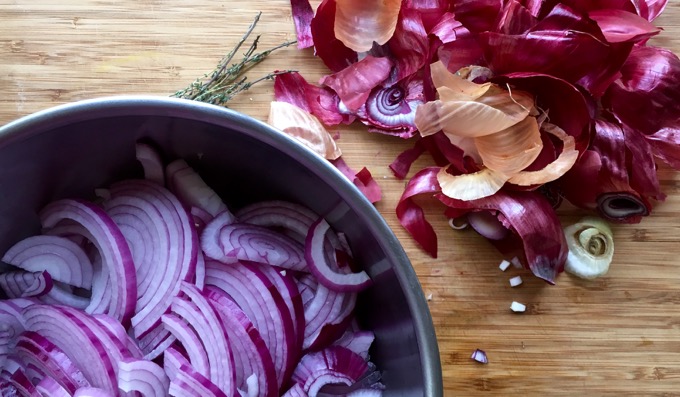
Imagine taking one third of the money you spend on groceries per year, and one third of the food you buy and threw both straight into the garbage? Well, that’s what you’re doing with the food you buy and don’t eat. Now, more than ever, it’s vital to cut down on our collective food waste and find ways to make the most of every piece of food we buy.
At the consumer level, here in Canada, we throw out $1,300 worth of food yearly and Americans toss about $1,800 worth each year. Roughly 30% of the fresh food we buy is thrown out due to spoilage.
The food waste problem doesn’t start and end with us at home, though: it’s created from ‘farm to fork’ food processing, farms, grocery stores, restaurants, and hotels. When you add it all up, nearly 60% of the food in Canada is wasted to the tune of $49.46 billion in total value. In the United States, that value is $165 billion. With people starving around the world and the heavy carbon footprint of food production, this is devastating on so many levels – especially since at least half of food waste is avoidable with some simple steps.
We tend to waste fresh vegetables and fruits the most (and healthier eaters and those in a higher income bracket toss more of them). Yes, veggies and fruits are perishable but they’re also some of the most nutrient-dense items we can consume!
Food waste is an enormous problem that costs us money, drives up food prices, depletes environmental resources like water and land, and is just downright unnecessary. But there is hope, my friends. We can’t control food waste up and down the entire supply chain – we can only take charge of our own behaviours. There are tons of ways that you can reduce food waste in the kitchen that will save you time and money.
12 ways to reduce your food waste
Learn To Cook Creatively From Scratch
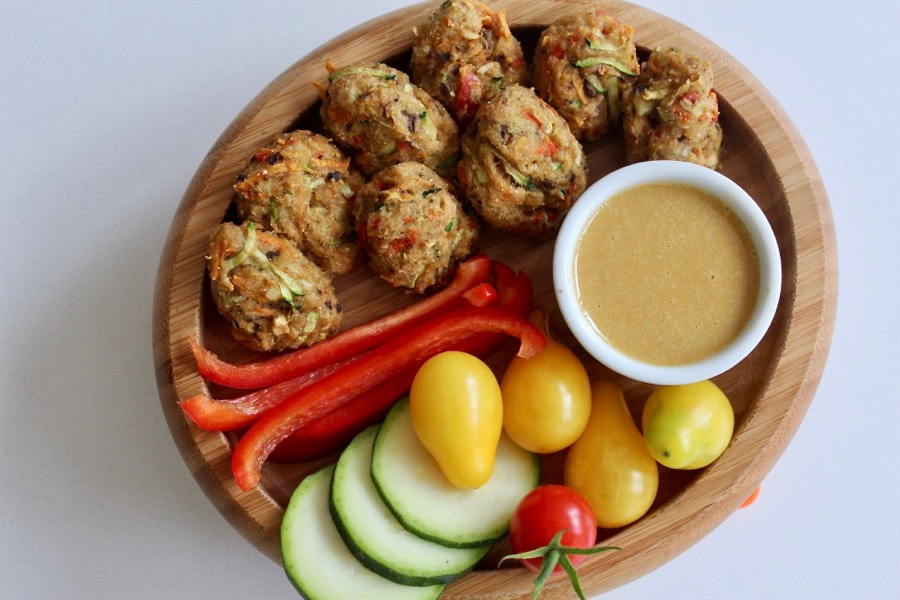
Given that most of what we waste are fruits and vegetables, get inspired to learn new ways to cook with them and how to make them taste amazing! Note: boiling vegetables to death isn’t going to improve their flavour – cooking methods matter.
Learn the art of sautéing, roasting, simmering or slow cooking to improve flavour, and make use of herbs and spices to amp up nutrition and taste. If you’d like to eat more salads, for example, massaging tough greens like kale with lemon juice and sea salt makes a huge difference in the overall texture and taste.
Don’t Toss Food Scraps
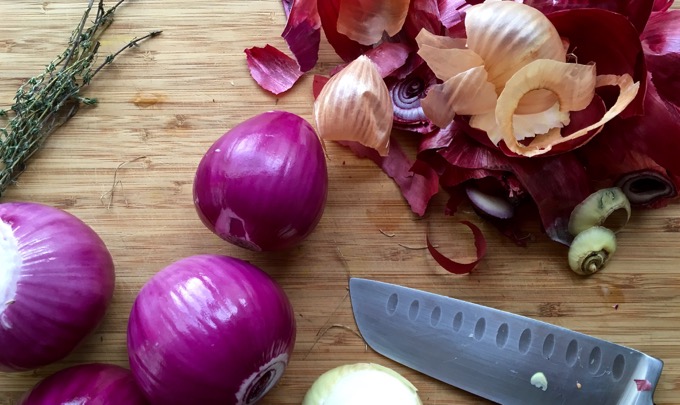
Save the trimmed ends and peelings of vegetables like celery, carrots, onions, mushrooms and potatoes in your freezer. Once you’ve got a big pile, throw them all in a pot, cover them with water and make homemade vegetable stock. And for the meat-eaters, save the bones of chicken or fish to make stock, too.
Love Your Leftovers
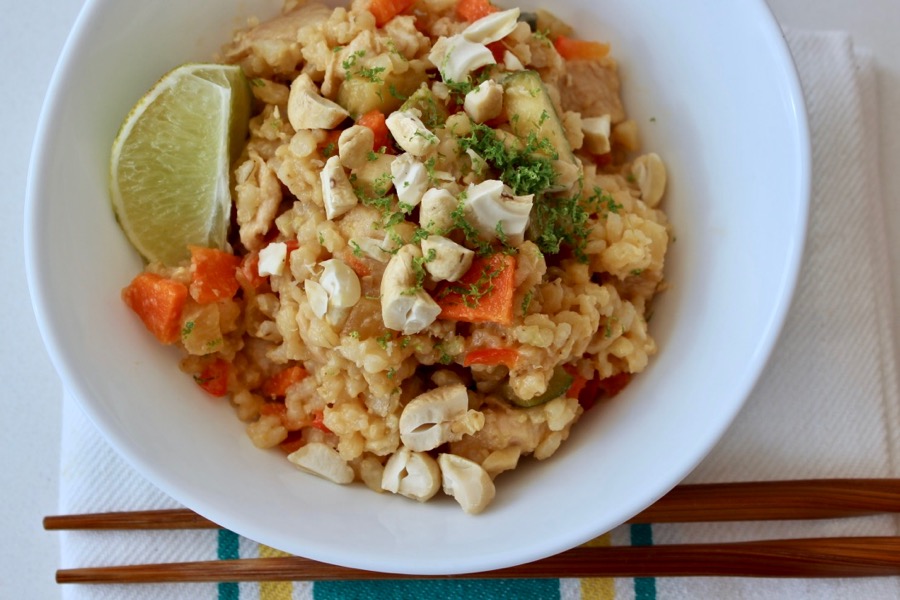
We know that variety is the spice of life, but sometimes you just need to make do with what you already have. Find ways to switch up yesterday’s meal – make mashed potatoes into hash brown patties, use random fridge bits for pasta, add leftover grains and beans to a soup or stew, or toss that tempeh into a sandwich. Here are tons more ideas for what to do with your leftover ingredients or meals.
Make a Shopping List
It’s great to be spontaneous and flow with whatever food ideas inspire you. It’s also great to plan your meals ahead of time and know what ingredients you need in the right quantities. Cooking will be a breeze and you’ll waste much less.
Buy What You Need
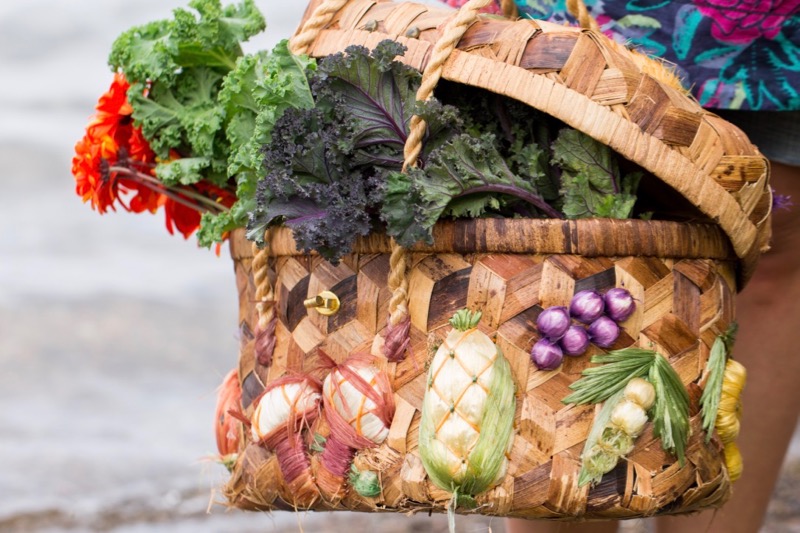
Buying five avocados for the price of two is only a bargain if you’ll actually use all of them before they go bad. Don’t purchase things simply because they are on sale or the bulk price is cheaper, unless the items are ones that will last a while, such as beans and grains.
Get Your Kitchen Organized
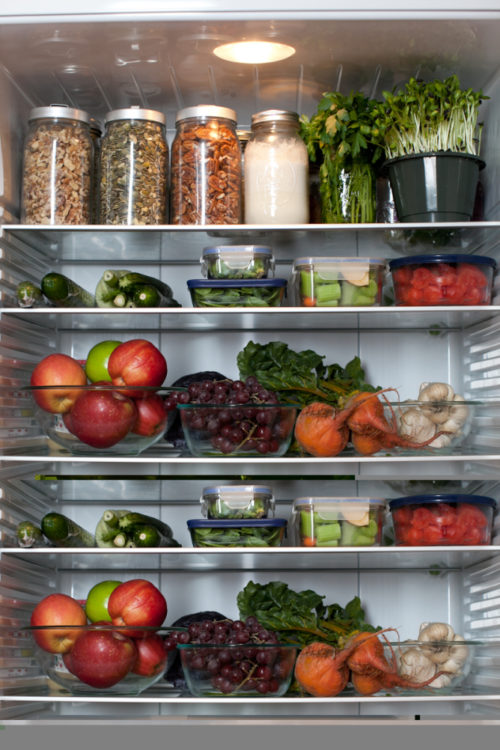
Take stock before you shop so you don’t buy something you already have. Move older produce to the front of the fridge so you’ll use it first, and make sure you have plenty of food storage containers in case you need to toss something in the freezer. In other words, keep things organized.
Learn How To Make Food Last
If you find that things in your fridge always go bad quickly it could be due to the way you’re storing it. Many veggies last longer if you plunk them in a container of water, while herbs stay fresher if you put them in a mason jar, wrap them with a recycled plastic bag and secure them with a rubber band.
Not everything has to go in the fridge, either. Ripe tomatoes can be stored on the counter, and garlic, onions, and root veggies can all be stored in a dry, cool area.
Prep veggies like celery, broccoli, and peppers as soon as you get home from the grocery store and keep them in nifty glass food containers. Learn best practices for storing food in the fridge here.
The Freezer Is Your Friend
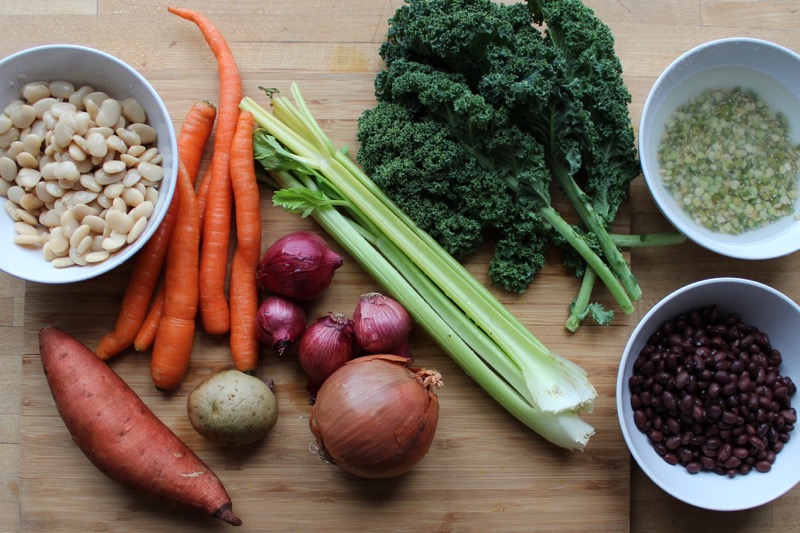
- Leftover soups, stews, salsas, broths, curries, and sauces all store well in glass jars in the freezer.
- Freeze fruit on a parchment-lined baking sheet and then store them in sealed containers.
- Pulverize stale bread and freeze your new breadcrumbs.
- Use those ice cube trays for more than just water – stuff them with pestos or vegetable stock instead, so you can use them in your cooking later for an extra hit of flavour.
The nice thing about storing food in the freezer is you’ll have instant frozen meals for when you’re in a hurry! Check out my full guide to freezing food – including tips and a classic video from my superstar grandmother.
Use Your Judgment On Best Before Dates
A ‘best before’ date simply means that a food will lose freshness, taste or nutritional quality after the date stamped on the package. Many of us are much too quick to toss food after the best before date, even if the food looks, smells and tastes fine. Learn more about best before dates here.
On the flip side, food can also go bad before it has reached its best before date. I recommend you use your senses as a guide for most food items.
Learn The Art of Pickling, Fermenting, Canning and Preserving
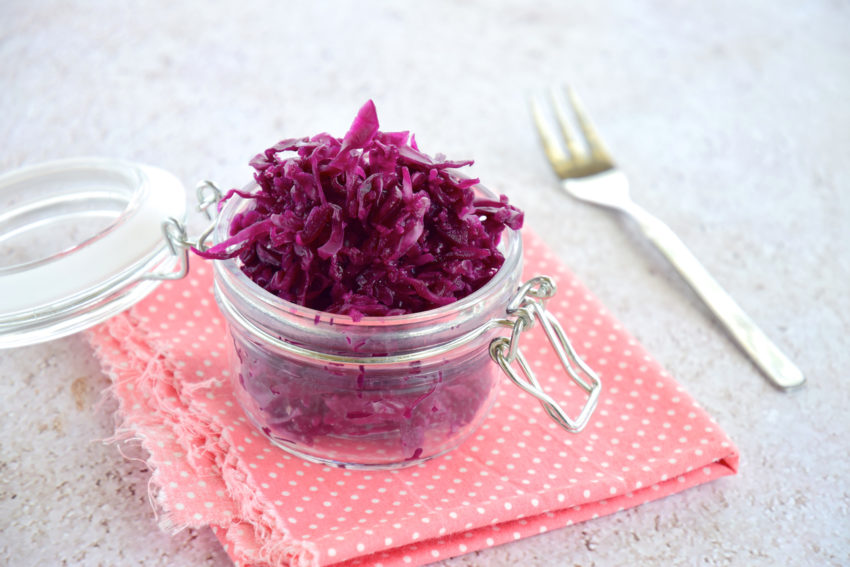
You don’t need to get all fancy with your preservation methods – it can be as simple or extensive as you want it to be. Learn how to make sauerkraut and other fermented foods like pickles and kimchi, or make a huge batch of jam at the end of the summer and stick it in the freezer. A food dehydrator – or the oven on its lowest setting – can help you dehydrate fruits, vegetables or meats for later, or you can make fruit rollups and kale chips.
If you’d like to dive deep into food preservation, check out this basic food preserving guide or the cookbook Batch.
Don’t Buy Cheap Food
Most people will rush out to buy the latest expensive cell phone technology, but balk at the price of a pound of apples. Food gives us the nutrients we need to thrive. We live in a culture that believes food should be cheap and when we don’t value our food it’s easier to toss it. Buying good quality, organic food means you might make more of an effort to use it.
Compost
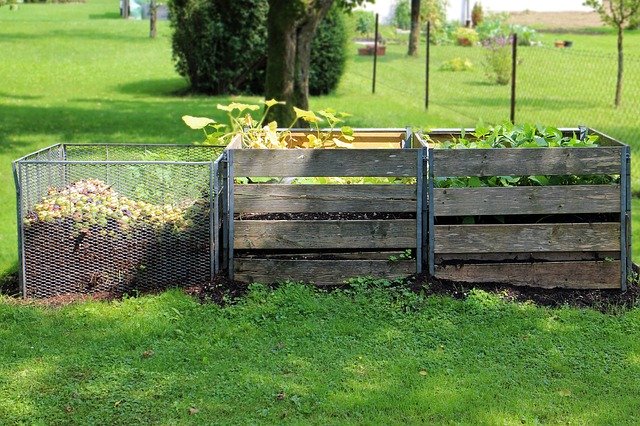
When you feel you’ve exhausted every option, put your food waste in your compost pile. Many cities now offer curbside compost collection, which makes it much easier for us to compost than ever before. Make an effort for this to be your last resort, not your first.
With these tips to reduce food waste, you can make the most out of your ingredients and your budget!
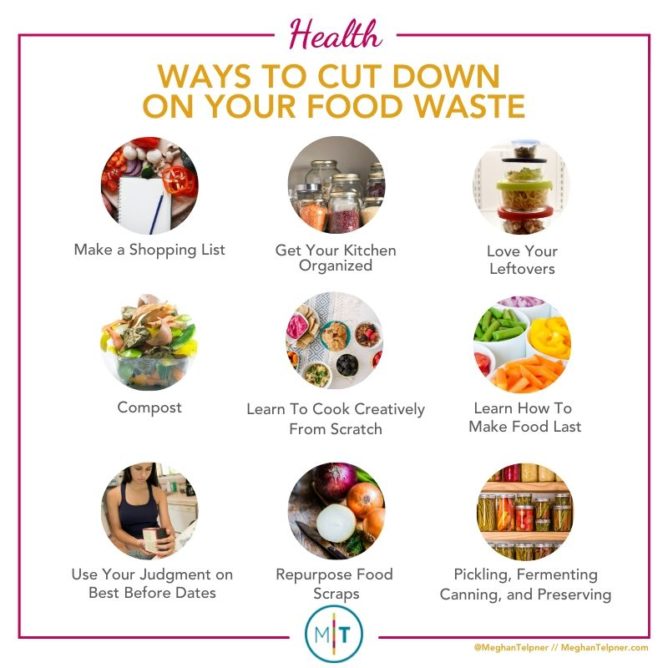
Free Resource Library
Enjoy more than 40 downloadable guides, recipes, and resources.

















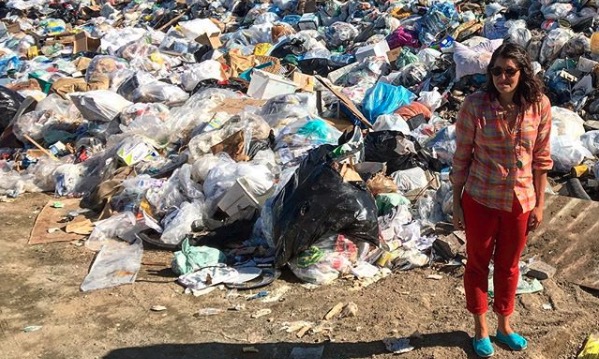

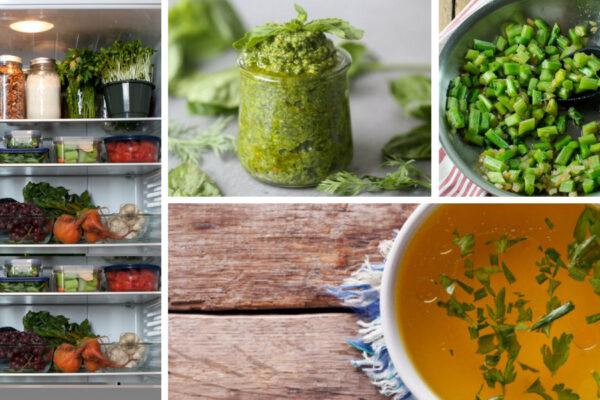
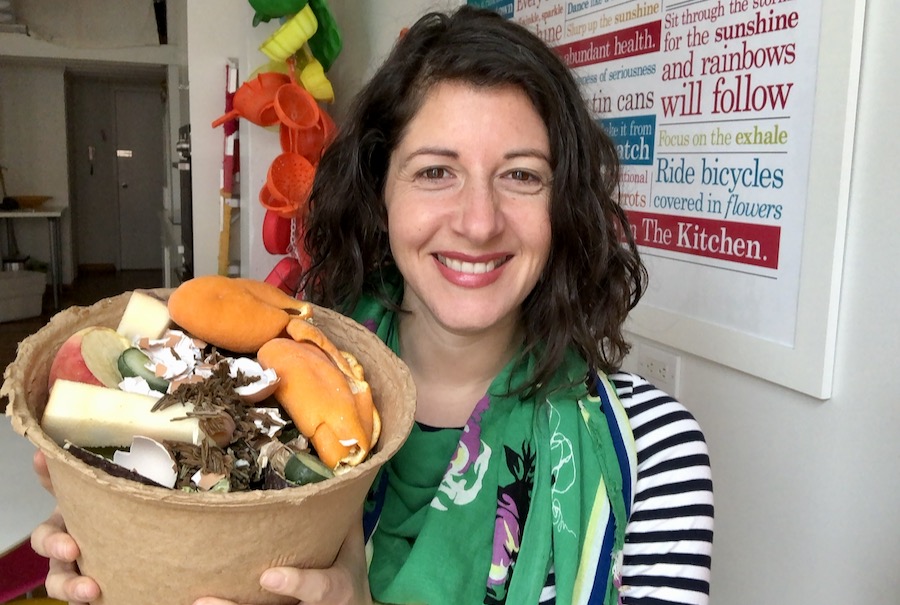
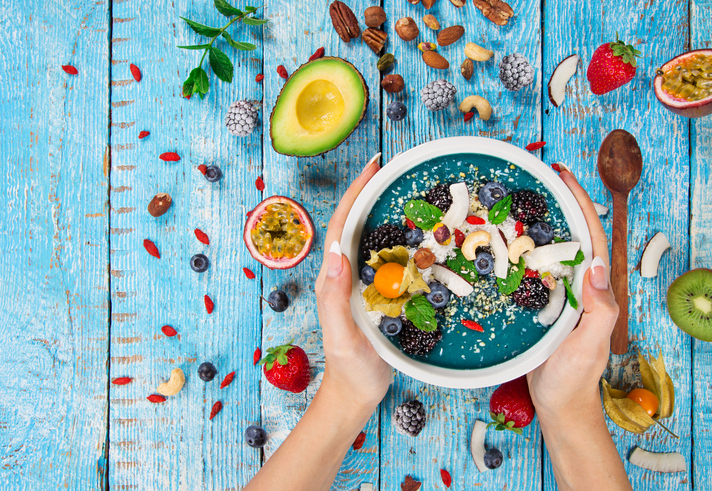


I make liquid compost by blending my fruit and veggie food scraps with water. This takes the nutrients directly into the soil, can be done year round and eliminates the need for composting.
Have the grandchildren over for sleep overs, they will eat you out of house and home, as they are always hungry, and you get the enjoyment of there love , questions and laughter.
we recently started having leftover Fridays (and sometimes Saturdays too) at our house, where all we eat are leftovers and things made from scraps left in the fridge. I only grocery shop once a week (at the markets on the weekends) so it is a good way to empty out remaining bits and pieces, freeze whatever is leftover and take stock of things needed for the coming week!
I also follow you on facebook!
My favourite is making stock with leftover veggie peelings. I’ve been doing this for a few years now. Because I work outside of the home, I throw my peelings in my crockpot, cover with water and when I come home, I have a perfect batch of stock… some of which I use right away to make risotto; the rest I freeze. My dad also buys a lot of apples in the fall; usually seconds so we always have an ample supply of apple sauce in the freezer made from seaonal and local apples.
Definitely composting! I love the idea of keeping a jar in the freezer to put veggie scraps in, and then making soup when it gets full.
I like you on fb!
Once a week my girlfriends and I make dinner together using leftovers or ingredients we haven’t found use for individually. Thursday we’ll email each other with a list of ingredients we have to use & we come up with a game plan. Last week we made a delicious veggie pizza. We get to socialize and use up ingredients that would otherwise go to waste!
Planning your menu around re-using some of the same ingredients so you can take advantage of bulk purchases or only needing a small amount of something for a recipe. You just have to think a little more about what you are eating.
I’m also a big fan of saving veggie bits for broth… so easy, so good, saves so much!
Make the freezer your best friend. If you make a batch of soup, stew, chili, etc., freeze individual portions in the fridge. Then take out a container when you need it. The freezer is a great place to store vegetable scraps for soup and broth!
I already like you on Facebook!
I would like to add the following: don’t be lazy! It’s so easy to fall into the “I’ve had a long day, I’m tired” mindset at the end of the workday. But really, how hard is it to pick up some salad greens (rather than a drive-thru burger), plunk your leftovers on top of it (warm or cold), and call it a meal? Answer: not hard at all! AND…it wastes less, costs less, and likely takes LESS time than it would to wait for your “fast”-food burger. Everybody wins!
So…I must confess that I was previously a big offender of wasting precious food – composting, but still wasting . So terrible. It’s not that I was buying a whole lot as it’s just me and I trek to the stores and markets on foot, making it so that there’s only so much I can carry. However, food was spoiling before I got to it because of the whole cheating on my kitchen with take away or easily prepared foods from the grocery store. I’m so happy this is not my way of life anymore (as is my bank account), and now it is rare that food spoils before I get to it. I can’t offer new suggestions as Meghan’s outlined what my new routine is – thanks to her! I ensure that I take the time to store properly , look at what I have in the fridge and cupboards before I search out recipes, always shop with a list, and freeze ½ to ¾ of what I make so that I’m not wasting as I try out other recipes and to make sure that I’m grabbing and going with my own satisfying meals. If there’s something I just can’t get to and I know it’s life is coming to an end shortly, I’ll share the goodness with friends and colleagues. LOVE the idea of using veggie scrap for stock. Totally going to do that!
Those beautiful glass containers would sure be a fabulous addition to my kitchen. And, I’m already following you on Facebook : )
I have been known to purchase big bushels of kale which completely go to waste because as much as I try, I just don’t like kale! My favorite no-food-left-behind trick is roasting! Any wilting veggies get tossed in the oven with a little evoo and pepper. Also I try to eat my least favorite veggies by disguising them in smoothies a little bit at a time. Banana, strawberry, and a little bit of kale smoothie it is!
For me, it is not buying or cooking more than I can eat. I love going to the grocery store and tend to overbuy! The greatest way to reduce food waste is to buy only what I know I can eat in the time between now and my next trip.
like you on facebook
My number one trick is not eating out when I know I have a fridge full of food. When someone says lets grab a bite to eat I suggest we cook dinner together instead. It’s easier to chat, healthier, and less wasteful.
I like to make big batches of juice on the weekends with whatever veggies I have left in the fridge.
Meal planning has really helped cut down both my grocery budget & the amount of food that I have to compost because it’s gone off. I set aside time on Sunday afternoon to sketch out our meal plan for the week (including leftovers for the days we are short on time) and try to make sure if I only need half a cauliflower or a handful of cilantro for a particular dish, for example, that I build in other meals & snacks that will use what’s left!
I live alone so when I am tempted to make a bigger recipe I plan it closer to the weekend so I can share leftovers with friends and relatives.
shop the bulk section! That way you can buy only what amount you need. Also visit your local farmer’s market. The people growing your food are right there for you to ask if they mind you buying a 1/2 a bunch of broccoli instead of more than you can finish!
Meal planning and having a grocery list is key. You buy what you need.
If I ever end up with odds and ends on my fridge, I throw them all in a pot and I make a veggie stew or chili. Also, these always end up being huge amounts, so are great for left overs for lunch at work.
This is crazy-shocking! Confession: I was notorious for tossing full heads of cabbage or six avocados that were long-forgotten and then spoiled. I’ve seen the light — Meghan’s help, naturally — and with some care and thoughtful shopping/consumption, wasted food is a thing of the past. Will be sharing this terrifying stat with everyone I know.
I make a meal plan for 7-10 days at a time, for all meals and snacks, so I don’t end up with a lot of things I don’t know what to do with. After a few nights of cooking dinner we eat leftovers, it saves me time in the kitchen and less food is wasted. I also send my son to school with leftovers for lunch if it is simple enough for him to eat quickly.
I also follow you on facebook.
Please plan your meals. What you make on Monday, take in your lunch on Tuesday. Freeze the rest. Most importantly, plan to NOT go to the store one week per month. It’s amazing how much you already have in your freezer and pantry. You will be more creative and use those stored foods before they go bad.
Reduce, reuse, recycle–good words for edibles as well.
Once a week or so, I make a soup with ‘tired’ veggies left in the fridge. I also make omelettes with leftovers (rice and quinoa are good with eggs!).
Great Tips! Saving the scraps to make a veggie stock is my favourite. It doesn’t matter what you have, just throw it in a pot and voila! veggie stock.
I like to make fried rice with leftover veg from the fridge and freezer. It’s so easy use up small quantities of beans, greens, and leftover rice in this way. Choose seasonings to flatter the leftovers (it doesn’t have to taste like an Asian dish!). This makes a great breakfast with scrambled eggs or tofu.
I follow you on Fb.
Be creative with your cooking. You might not believe it until you try it, but an avocado, some cacao powder (or cocoa powder) and sweetener of choice makes a lovely chocolate mousse.
Also, sometimes it’s worth it to buy a (small, healthy) treat rather than making it. If I go buy a cookie instead of making a batch of them, I’m won’t have the rest of the batch to snack on rather than eating lunch.
When I notice my veggies are nearing their end (I always tend to buy way to much!), into the vitamixer they go for smoothies or into the freezer as soup. Love my vitamix!
Another great post. Love your recipes!
Buy vegetables individually (like carrots and celery) so you can choose how much you will eat. Large packages may seem to save money up front, but when it ends up in the compost bin it’s your dime wasted.
We don’t really have much food waste. We eat what we buy, we don’t make our meals larger than we can eat, and when we have leftovers we eat them.
Planning meals. I sometimes end up with themed weeks depending on what ingredients I buy. I also plan one or two quick meals for the time strapped days. That way I don’t end up serving crap. To keep from wasting food,
We never have food waste, maybe twice a year I throw something away. We eat all!!!
I’ve discovered that the best way to reduce food waste is to make the food as visible, accessible, and ready-to-use as possible.
Here’s how this approach works for me: When I come home from the farmers’ markets, I chop up all the veggies and other produce and put them in clear glass jars in my fridge. Each jar (and its contents) is visible, and I know exactly what I have right when I open my fridge. I keep all my fruits in easy-to-grab from glass bowls which I have on clear display in my kitchen. I also keep my dry goods in easy-to-access clear containers. (Boy, I’d love to win this glass container giveaway!) Eating healthy has never been easier—a wonderful meal is often just a few jar openings away.
Since implementing this system, I’ve had almost no food waste. And, this system also makes it easy for me to see when I’m running low on any particular food. I guess my approach can be summarized in three steps: See it. Use It. Replenish it.
Sweet, sweet @weangreen #giveaway http://t.co/7zF4gCxs
To help you REUSE -> RT @meghantelpner: Sweet, sweet @weangreen #giveaway http://t.co/MuZA0bLm
10 Ways To Cut Down On Your Food Waste http://t.co/2L40pHim
Great blog post on food waste reduction at home: http://t.co/XLghzS2R
Good post! RT @JanesGreen: Great blog post on food waste reduction at home: http://t.co/lm0JlJZw
estimated $27 billion worth of food ends up in landfills cc @meghantelpner @sondibruner
I have been cooking smaller meals so there are no leftovers. Salad before dinner and if anyone is still hungry after dinner is over, they get a piece of fruit for dessert! We are no longer throwing away uneaten leftovers and everyone is eating more fruits and veggies. Win-win!
estimated $27 billion worth of food ends up in landfills cc @meghantelpner @sondibruner
I tweeted and liked on FB!
I think my biggest tips are buying good quality food and only making what you need.
Make sure you take a look each day to see what might only have a couple of days left and see how you can incorporate it into your meal in the next day or so. I’m sure planning would take care of this…but I’m awful on planning!
Thanks for the great post. I have been cooking only what I can eat for dinner with enough for one lunch. I don’t like a lot of leftovers, so I try to not have them.
entered this sweet, sweet giveaway yet? http://t.co/7zF4gCxs #giveaway #eco
Whenerver I cook, if there are leftovers they immediately get packed for lunches.
I do all the things you mentioned above with the exception of canning, although, I’m in the process of starting. Figuring out what kind of presser cooker to buy, looking for recipes/canning books, and I’ll be off! Really like the above comment about processing scraps with water for the compost pile…think we’ll try that.
My son’s daily school breakfast is usually returned home w/ an uneaten banana, I toss them into a gallon-sized baggie in the freezer and then throw a couple into pancake mix on the weekend. Cuts down on sugar and gives the kids extra nutrition :)
We toss very little in regards to food. However, there is enough stuff that we really need to start composting. This entry has given me the push needed to go out and make this happen. Cheers.
stop wasting food! treat yourself, your wallet and the planet better. http://t.co/7zF4gCxs
still time to enter our sweet, sweet @weangreen #giveaway! http://t.co/7zF4gCxs
My Dad always was always firm about not wasting food & practiced what he preached. Leftovers were always eaten. He had a magicial way of turning what’s left into something different and delicious.I try to do the same as much as possible:-)cc
don’t miss out on this @weangreen giveaway! http://t.co/7zF4gCxs #giveaway #eco
What works for me is to plan out my meals for the entire week and prepare them in advance. Some things I can portion in advance (like cooked rice) and freeze. I also make a shopping list of ingredients I need to make my meals for the week and stick to it. This way I always buy what I know is going to be eaten during the week. Key thing is to portion your food, prepare it in advance and you’ll never end up with leftovers and waste.
If I have dinner leftovers I divide them up into lunch portions immediately so we can just grab and go the next morning.
estimated $27 billion worth of food ends up in landfills cc @meghantelpner @sondibruner
only two more days to enter this SWEET giveaway! http://t.co/7zF4gCxs #eco #giveaway
I also dehydrate veggie scraps, pulp, or nut pulp and use it in dehydrated crackers. I also make a plan for for the grocery store so I don’t overbuy.
estimated $27 billion worth of food ends up in landfills cc @meghantelpner @sondibruner
Estimated $27 billion worth of food ends up in landfills cc @meghantelpner @sondibruner
tweeted @cherrycobbler
like you on facebook
I keep a container in the freezer that I add scraps to as I go, once it’s full I have all I need to make a good soup stock.
estimated $27 billion worth of food ends up in landfills cc @meghantelpner @sondibruner
tweeted @eater111
use the dehydrator when anything is near going bad. I’ve saved a lot of fruit that way and appreciated it when I had no fresh fruit on hand.
Just use self control at the farmer’s market or grocery store. That is very difficult, but practice makes perfect and is less unpleasant than throwing out yucky, fuzzy food.
Only one day left to enter this fantastic @weangreen giveaway! http://t.co/7zF4gCxs
estimated $27 billion worth of food ends up in landfills cc @meghantelpner @sondibruner
We cut about $100 a month out of our food bill, by creating our menu for the week in advance and only shopping for what we need. As a result, we have less waste at each meal and less thrown out at the end of the week. It also prevents a certain amount of impulse buying. Mostly, this is an issue for my husband, so with list in hand, I can say, sorry I don’t see that bag of candy/jar of pickles/package of processed whatever on the list, so we really shouldn’t be getting it.
I tweeted the tweetable.
I’ve “liked” you since before the current page existed on FB. :o)
estimated $27 billion worth of food ends up in landfills cc @meghantelpner @sondibruner
I already like you on facebook. These are great tips. We have cut down on food waste by not having unhealthy snack foods in the house. The girls are forced to eat any leftover food or veggies/fruit that have been prepped in the fridge. This has worked wonders in my kitchen.
our sweet, sweet @weangreen giveaway closes today at 5 p.m. http://t.co/7zF4gCxs #giveaway
Only a few more hours to enter this sweet, sweet giveaway! http://t.co/7zF4gCxs
An estimated $27 billion worth of food ends up in landfills cc @meghantelpner @sondibruner
Great giveaway, and very cool containers! Whenever I’m trying something new that I’m not sure that I like, I’ll try to find it at Bulk Barn so that I can buy just enough to try it. That way, if I don’t, I’m not left with a big open bag or can of food that I have nothing to do with! If any packaged/canned goods do happen to get into my house that I know I’m not going to use, I donate them to the Food Bank.
Ooh and I already follow you on facebook!
Tips to save your wallet, fridge and planet via @sondibruner #eco
Ten ways to cut down on food waste – don’t just compost – make soup stock! http://t.co/AskbxG1Y
Nope, we didn’t make up how much #food #Toronto tosses a year http://t.co/FmsKUY2e
‘@meghantelpner “27 billion dollars worth”! RT Nope, we didn’t make up how much #food #Toronto tosses a year http://t.co/Gy0C7ZTH
estimated $27 billion worth of food ends up in landfills cc @meghantelpner @sondibruner